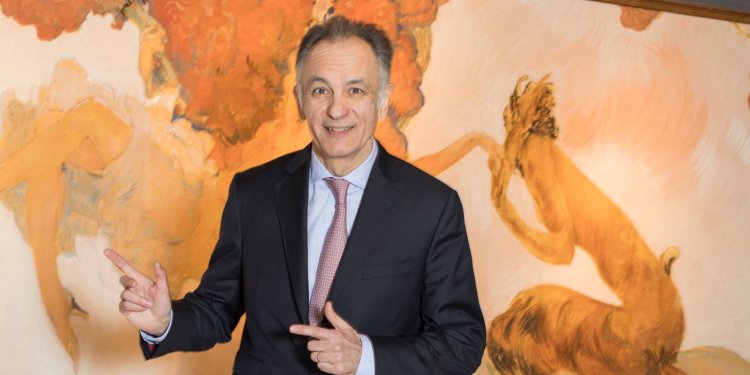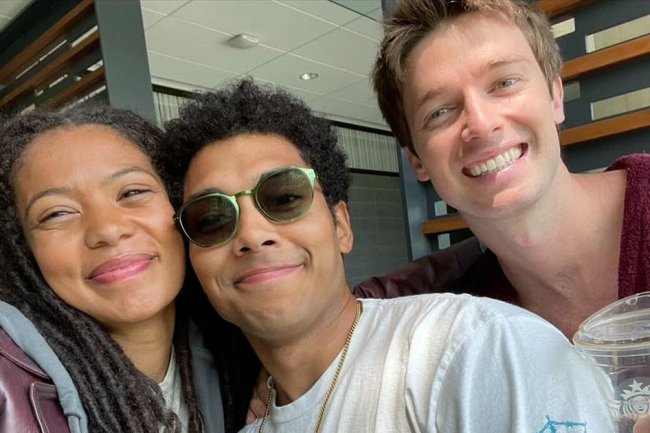Why Christie’s CEO Guillaume Cerutti Is Still Bullish on NFTs
The auction-house executive talks about Beeple, changing luxury markets and how he prepares for triathlons Contour Contour By Lane Florsheim June 12, 2023 8:30 am ET Christie’s CEO Guillaume Cerutti is an art enthusiast, but he’s no snob. He speaks about German surrealism and American NFTs with equal reverence, aware that the market is always shifting. Reflecting on the auction house’s 2021 sale of Beeple’s digital artwork “Everydays: The First 5,000 Days” for $69 million, Cerutti, 57, said, “I cannot describe what we felt—we were writing history.” Despite flatlining sales and surrounding legal issues, NFTs and digital art are sectors Cerutti remains bullish on. He has also


Christie’s CEO Guillaume Cerutti is an art enthusiast, but he’s no snob. He speaks about German surrealism and American NFTs with equal reverence, aware that the market is always shifting.
Reflecting on the auction house’s 2021 sale of Beeple’s digital artwork “Everydays: The First 5,000 Days” for $69 million, Cerutti, 57, said, “I cannot describe what we felt—we were writing history.”
Despite flatlining sales and surrounding legal issues, NFTs and digital art are sectors Cerutti remains bullish on. He has also become enthusiastic about luxury goods outside the art market, as they have been key to bringing in new clients. He said that when hiring at Christie’s, he looks for people who share that enthusiasm. “Our clients collect by passion,” Cerutti said. “It needs to be reflected by our specialists.”
Cerutti, who was born in southern France, lives in London, where he has helmed the auction house since 2017. He got his start working as a financial adviser for the French government before working in leadership roles at the Pompidou Center and Sotheby’s. Here, he talks about his triathlon training, millennial tastes and why he doesn’t call himself a collector.
What time do you get up on Mondays, and what’s the first thing you do after waking up?
I wake up every day between 6 and 6:30 a.m. The first thing I do is check my emails. Maybe the second thing I do is more interesting. I read newspapers—the first I read is the French sport daily L’Équipe.
How do you like your coffee and breakfast?
Black coffee, very intense, very strong. And continental breakfast.
You’re a triathlete—what do you do to train?
I try to practice sports at least six days per week. Swimming, running and cycling with the objective every year to participate in one or two triathlons. Olympic distance, which is very reasonable: 1.5 kilometers swim, 40 kilometers cycling and 10 kilometers run. This year, I intend to participate in the New York Triathlon—it’s swimming in the Hudson, then you cycle in Manhattan and run in Central Park.
What’s the next big target for Christie’s after the $1.5 billion Paul Allen estate sale?
The Paul Allen sale, I don’t want to say it’s once in a lifetime, but it’s probably not every year, but every five years. It really was one of a kind, a collector who has an extraordinary eye always collecting the best and choosing himself. There were queues of people waiting to see the work, it was really moving.
Once we have ended a sale, we’re working on the next one, and the next one will be different. It’s extremely demanding. Once you have sold the Allen collection, well, you need to start over again from scratch. We are a sort of temporary museum.
What art do you collect yourself?
I do not define myself as a collector, but I’m interested in many different categories. I started my career a long time ago, working for the Pompidou Center in Paris, so I’m interested in particular in modern art. I love photos, design. But in my role, I have to participate in so many different meetings with clients in different categories that I appreciate every category, including NFTs.

Christie’s CEO Guillaume Cerutti has led the auction house to appeal to younger collectors: ‘We’re now selling sneakers, handbags. Because this new generation, that’s what they want.’
Photo: Contour
What kind of legs do you think NFTs and digital art have?
It has been the most exciting revolution in our field in decades. When we sold the work by Beeple, it was extraordinary. We were not expecting this price, of course, and we had 30 new collectors bidding in excess for $1 million for an NFT. It’s a complete transformation of the art market—not that we invented this field, but this sale helped to put a light on this field.
Does the art market feel resilient to you right now?
The demand is very strong and very global. A lot of people feel that the art market is protected against the overall macro-environment because when you collect art, you collect something that won’t lose value in the long run. That said, we aren’t protected against the macro-environment. Overall, we have proved over the last few years, including during Covid, that the demand is extremely strong in this market.
How do you target millennials and young collectors and learn what they like? Who do you talk to?
Something that’s changed dramatically over the last years is our business model, which went from brick and mortar—with people in a room, with an auctioneer, a sort of theatrical performance—to something that is, half the time, online. This change has driven the influence of new collectors. We’re now selling sneakers, handbags. Because this new generation, that’s what they want.
What geographic markets are you looking at and excited about right now?
Millennials are coming from Asia. They’re also shaping the new taste in luxury and contemporary arts. The Middle East is extremely active and dynamic as well. We are also in the process of figuring out the best way to expand our presence in Saudi Arabia. We have exhibitions and projects in Dubai. New York remains a major hub, but there are many other places in the world where we need to be present and active.
Do you have an artwork or object that you think of as the one that got away?
Every great work I see sold by a competitor is a regret for sure. But it’s also the pleasure of knowing it will be bought by another collector. Of course we are frustrated when we don’t get something and we wanted it, but at the same time, we know it will probably land in a great collection and give pleasure to the owner—and maybe be on the market again at some point.
What have you been reading lately?
A book by Annie Ernaux, “The Years.” I read it already a long time ago. It’s a fantastic book. It’s a sort of daily depiction of life from the ’40s to 2006 or 2007. It’s 60 years of changes in French society and the world through the lens of her daily life.
What’s a piece of advice you’ve gotten that’s been important to you?
You always need to give the best of yourself in whatever you do, even when you could do the job with doing less. When I was young, I was working on an audit of the French Opera House. At the time, the opera house was always full. We were talking about the expenses linked to new performances. I told the [programming director], “Why do we need to spend so much money on new projects? They will not see the difference if we do things slightly less expensively.” He said, “It’s precisely because the public could be satisfied with just roe that you need to give them caviar.” You have to give the best as a sign of respect for the people you work with.
This interview has been edited and condensed for clarity.
Write to Lane Florsheim at [email protected]
more in My Monday Morning:
- Comedian Eric André on the Best Piece of Advice Dave Chappelle Gave Him
- Why Celebrity Stylist Karla Welch Thinks ‘Old Money’ Is Funny
- Keke Palmer on What the Met Gala Taught Her About Imposter Syndrome
- The CEO of an Eyebrow Empire on Her Biggest Beauty Mistake
- How ‘Bridgerton’ Author Julia Quinn Works Through Sex Scenes and Writer’s Malaise
What's Your Reaction?













